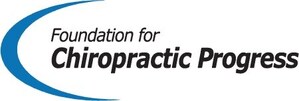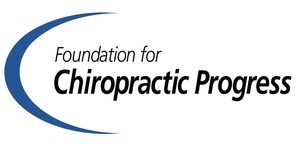SAN JOSE, Calif., Sept. 11, 2018 /PRNewswire/ -- Transforming toward a new care model that is patient-centered, comprehensive, collaborative and conservative, the U.S. healthcare system is incorporating chiropractic care as a drug-free treatment approach for the management of spinal disorders.
Four recent independent studies highlighted by the Foundation for Chiropractic Progress (F4CP), a not-for-profit organization dedicated to educating the public about the benefits of chiropractic care, validate how chiropractic care blends with the new healthcare model of collaboration and coordination. Major themes resulting from these studies include the importance of educating multidisciplinary providers about patient satisfaction, improved health outcomes and ease of integration with chiropractic.
"With the move toward conservative, non-invasive pain management, a growing number of physicians and medical organizations are recognizing chiropractic as a key component of collaborative care," said Sherry McAllister, DC, executive vice president, F4CP. "Studies published as recently as the first half of 2018 support what we have always known, doctors of chiropractic (DC) play an important role in multidisciplinary teams, specifically as it relates to the drug-free management of back, neck and headache pain."
Key findings
- Delivery of chiropractic care in nine medical facilities was perceived to have high value among patients, medical providers and administration, according to a study published in The Journal of Alternative and Complementary Medicine (July 2018). The study evaluated a diverse group of U.S. private sector medical facilities that had implemented chiropractic clinics using existing resources. DCs were sought to take an evidence-based approach to patient care, work collaboratively within a multidisciplinary team, engage in interprofessional case management and adopt organization mission and values. Markers for clinic success included: patient clinical outcomes, patient satisfaction, provider productivity and cost offset. Based on these markers, facility stakeholders, including clinicians, support staff, administrators and patients, reported high satisfaction with the care provided by DCs.
- Patients who received collaborative care that included chiropractic manipulation integrated with usual medical care reported improvement in low back pain intensity and disability compared with those who received standard medical care (medication, physical therapy, pain management) alone. The study, published in the JAMA Network Open (May 2018), is the largest randomized clinical trial in chiropractic research in the U.S. to date. It took place over four years, from September 2012 to February 2016, and involved 750 active-duty U.S. military personnel at three sites across the country.
- Another study published by the National Institutes of Health (February 2018) was designed to develop an integrated care pathway for DCs, primary care providers, and mental health professionals who manage veterans with low back pain (with or without mental health comorbidity) within Department of Veterans Affairs (VA) healthcare facilities. In the VA, chiropractic care is a tier 1 integrative pain treatment modality that may be incorporated into a Veteran's patient-centered plan of care.
- A study in Chiropractic & Manual Therapies (June 2018) supports the integration of a DC into a multidisciplinary rehabilitation team. Sixty participants were interviewed as part of a study designed to provide an expanded view of the qualities that DCs might bring to integrated healthcare settings. The study provides suggestions for leadership strategies and professional attributes the chiropractic profession needs to consider to further enhance chiropractic participation and contributions to improving the nation's health. Preferred attributes include patient centeredness (being respectful, responsive and inclusive of the patient's values), interprofessional qualities (teamwork, resourcefulness) and personality fit.
Chiropractic is 123 years old
As a result of patient need, the opioid epidemic and value-based models of care, the inclusion of chiropractic as a component of multidisciplinary healthcare could not come at a better time, as chiropractic celebrates its 123rd birthday on September 18, 2018. The first state licenses were issued in 1913, and by 1931 a total of 39 states had provided legal recognition to DCs.
Today, all 50 states, along with the District of Columbia, Puerto Rico, and U.S. Virgin Islands officially recognize chiropractic as a healthcare profession. It is also recognized in many other countries, including Canada, Mexico, Great Britain, Switzerland, Australia and Japan.
As primary care professionals for spinal health and well-being, DCs earn a minimum of seven years of higher education and are specifically trained to diagnose, evaluate and provide non-pharmaceutical care and rehabilitation to individuals suffering from acute, subacute and chronic low back and neck pain, headaches, neuro-musculoskeletal and other related conditions.
About Foundation for Chiropractic Progress and Foundation for Chiropractic Education
A not-for-profit organization, Foundation for Chiropractic Education (501c3) and the Foundation for Chiropractic Progress (501c6) provide information and education regarding the value of chiropractic care and its role in drug-free pain management. Visit http://www.f4cp.org; call 866-901-F4CP (3427). Social media: Facebook, Twitter, LinkedIn, Pinterest, YouTube.
Media contact:
Marcia Rhodes, Amendola Communications for F4CP
[email protected] ; 480.664.8412 ext. 15
SOURCE Foundation for Chiropractic Progress
Related Links
WANT YOUR COMPANY'S NEWS FEATURED ON PRNEWSWIRE.COM?
Newsrooms &
Influencers
Digital Media
Outlets
Journalists
Opted In





Share this article